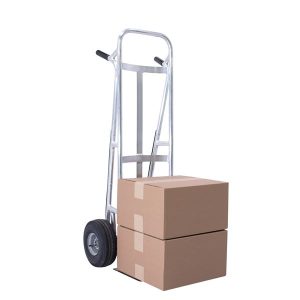
Moving heavy boxes and objects by hand isn’t just tedious; it’s a safety hazard. According to the U.S. Bureau of Labor Statistics (BLS), over 1 million workers suffer a back injury in any given year. Rather than bending your back to lift boxes and objects, you should consider using a commercial hand truck. It will increase your productivity while protecting you from injury in the process.
What Are Commercial Hand Trucks?
Commercial hand trucks are heavy-duty material handling devices consisting of an L-shaped frame with wheels on the bottom. Also known as hand trolleys, they simplify the process of moving boxes and objects.
Common features of commercial hand trucks include the following:
- Flat lip on the front
- Hands for pushing or pulling
- Durable wheels on the bottom
- Corrosion-resistant metal frame
How Commercial Hand Trucks Work
While there are different types of commercial hand trucks, they all feature a flat plate-like lip. You can stack boxes, materials and other objects on this lip. Once stacked, you can then tilt the commercial hand truck backward, followed by rolling it.
Moving boxes and objects is a breeze with a commercial hand truck. The wheeled bottom will allow you to roll the objects rather than carry them. Some commercial hand trucks can even traverse stairs, making them particularly useful for multistory workspaces or other spaces with stairs.
Choosing a Commercial Hand Truck
One of the most important things to consider when choosing a commercial hand truck is the load capacity. The load capacity, of course, represents the maximum total weight a hand truck can safely support. Some commercial hand trucks have a load capacity of 600 pounds, whereas others have a load capacity of 1,000 pounds. Think about what type of objects or materials you’ll be transporting, and choose a commercial hand truck with an appropriate load capacity.
You should consider the wheel type when choosing a commercial hand truck. Not all commercial hand trucks have the same type of wheels. Some of them have solid rubber wheels, for example, whereas others have pneumatic or even foam-filled wheels. Solid rubber wheels are a popular choice because they are puncture-proof and provide good traction. Pneumatic wheels, though, are better suited for rough and uneven surfaces due to their shock-absorption properties.
If you’re planning to push them up and down stairs, you may want to choose a stair-climbing hand truck. Stair-climbing hand trucks still feature an L-shaped frame with wheels on the bottom, but they typically feature three sets of wheels on each side. These extra wheels allow them to roll up and down stairs with ease.
